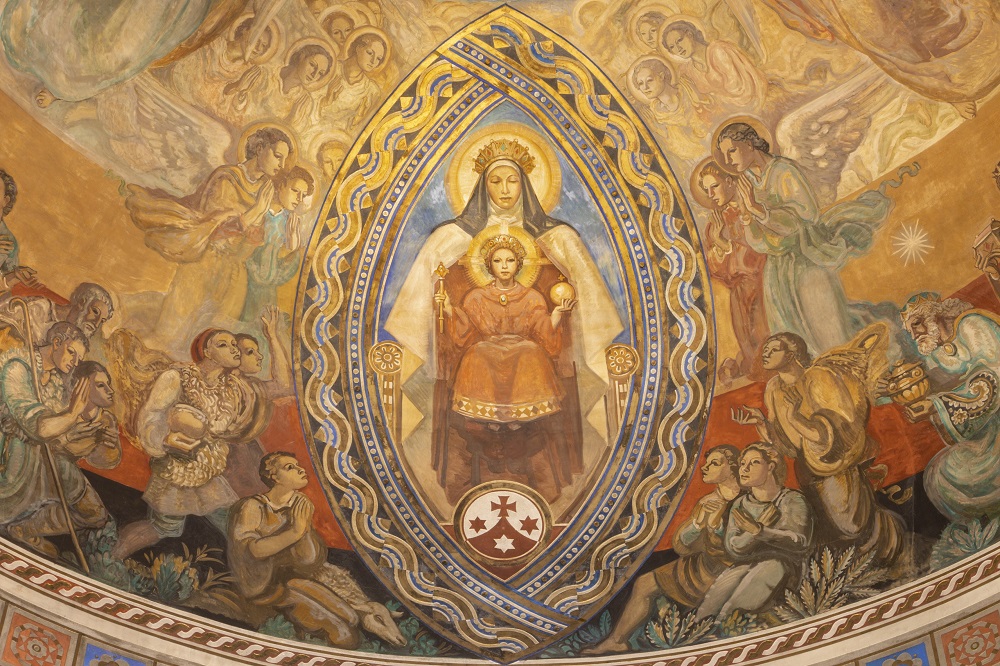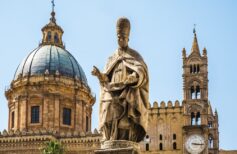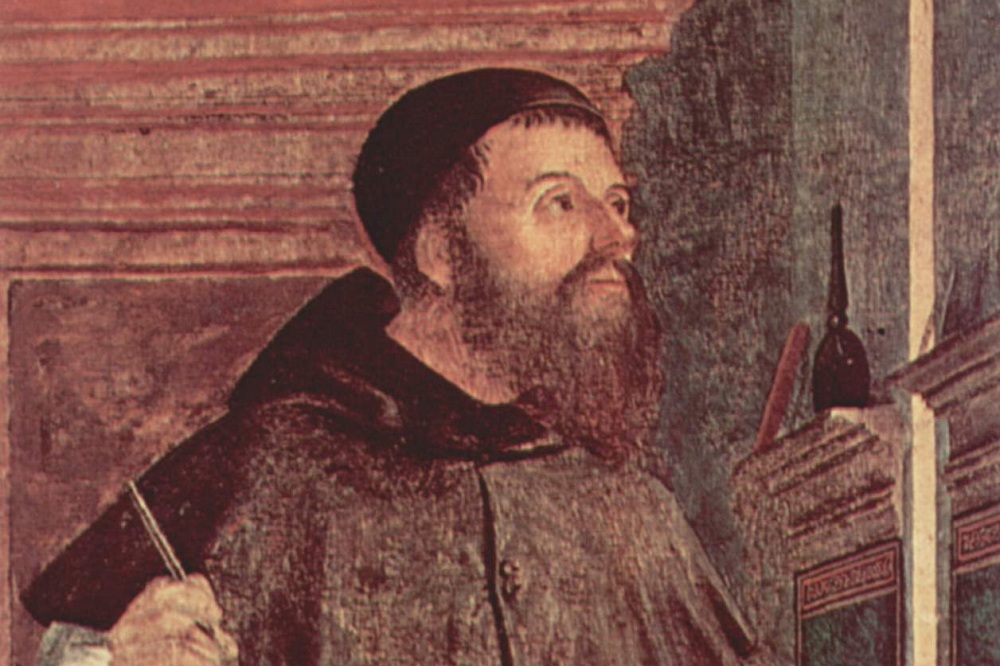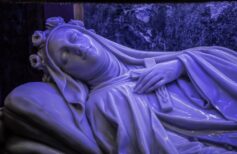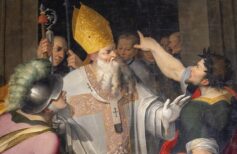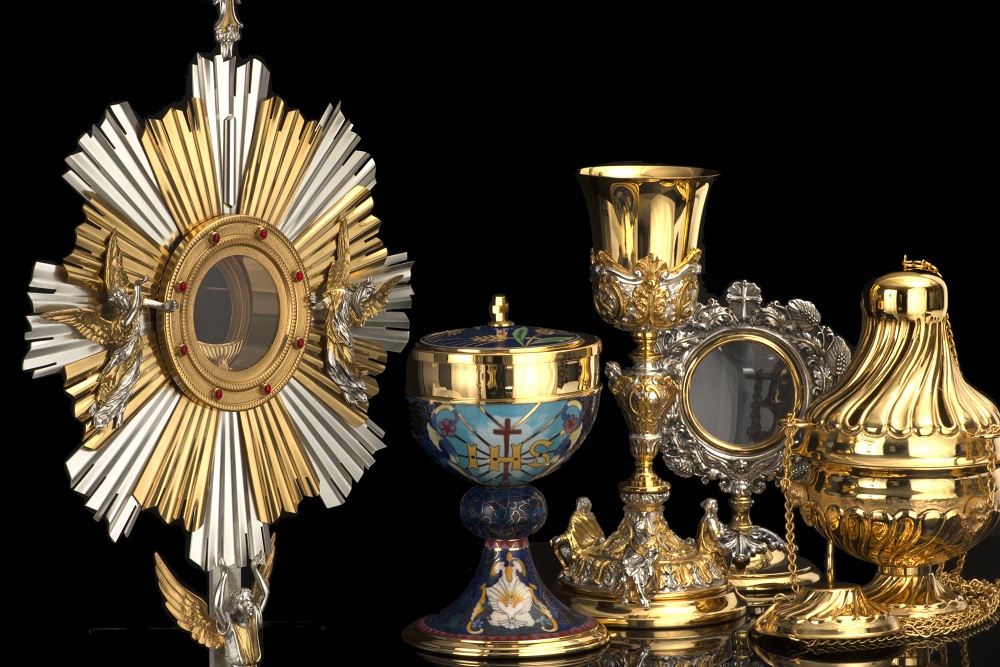On 1 October we celebrate Saint Therese of Lisieux, one of the four women proclaimed Doctors of the Church. But who are the Doctors of the Church? What are the requirements to become one?
Contents
We hear from time to time talk of Doctors of the Church, in relation to great names in the history of Christianity, such as Sant’Ambrogio and Sant’Agostino da Ippona. Men (and women) who by virtue of their holiness and wisdom have been able to make the Church great and leave a testimony of an immortal theological knowledge and spiritual strength.
But who are really the Doctors of the Church?
First of all we must not confuse the Doctors of the Church with the Fathers of the Church, although many eminent figures of Christianity, such as Saint Ambrose of Milan, Saint Augustine of Ippona and Saint Jerome, just to name a few, have been awarded both denominations. By Fathers of the Church, we mean the principal Christian writers, whose writings form the basis of the doctrine of the Church itself.
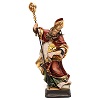
As regards the title of Doctor of the Church, it can be granted only by the Pope or by a Council, or an ecclesiastical meeting under hierarchical authority. It can only be conferred posthumously and upon completion of a canonization process. A rare honour, therefore, which in just over two thousand years of the Church’s history has been attributed to only 36 men and women. Well yes, there are also four women who have become Doctors of the church, and we’ll see who they are.
At present, there are 26 other saints, 8 women and 18 men, candidates for the title of Doctor of the Church. Their elevation processes are being examined by the Episcopal Conferences and the Holy See.
The appointment as Doctors of the Church also has a function of communion between the Orthodox and the Catholic Church, as to be awarded this honour over the centuries have been both saints of the Western Church and the Eastern Church, and both Catholic and Orthodox churches recognize and they worship some of these personalities.
But what are the requirements to be elected doctors of the Church?
According to Benedict XIV, who was pope between 1740 and 1758, the necessary requirements for the proclamation of a Doctor of the Church are 3:
- eminent doctrine;
- the holiness of life;
- election by the Supreme Pontiff or by the General Council.
Therefore, we can affirm that beyond rectitude in conduct and virtuous life, essential prerogatives of all men and women declared saints over the centuries, and considering the election by the Pope or the Council as acts of formalization and legitimation, what distinguishes a Doctor of the Church from a holy man is his knowledge, his erudition, his religious culture, and his ability to express his thoughts in order to spread new knowledge. Erudition and culture which in the case of the Doctors of the Church has resulted in the production of writings, which have at times been treatises on theology, letters, literary works against heresy or autobiographies, as in the most famous case, that of the Confessions of Saint Augustine.
Saint Therese of Lisieux
We wrote at the beginning of this article that on 1 October the Church remembers Saint Therese of Lisieux, patroness of France and of missionaries. She was a French Carmelite nun who lived in the late 1800s, devoted her entire life to the pursuit of holiness and sacrifice, and who died at the age of just twenty-four. “My God, I love you” were her last words. Her full religious name was Teresa of the Child Jesus and of the Holy Face. His parents were also recently declared blessed.
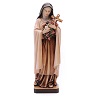
She was beatified in 1923 and in October 1997, during the pontificate of John Paul II, she was the third woman to be proclaimed a Doctor of the Church, after Catherine of Siena and Teresa of Avila. She is also the youngest of the Doctors of the Church.
Saint Teresa is famous for her theology of the “little way”, or “spiritual childhood”, expressed in her posthumous publications, including Story of a soul. Among his recognized works, three autobiographical writings, 54 poems, 8 plays, 21 prayers and 266 letters have been collected. Her spiritual vision made her one of the best-known and most loved saints.
Teresa tended with all of herself to the love of God, with an unshakable youthful enthusiasm and ardour. Although the disease that would have brought her to death manifested itself very soon, forcing her to a life of pain, she found comfort in the search for the small way, abandoning herself completely and joyfully to the will of God, capable of transforming every day into a wonderful game.
A few sentences she wrote are enough to understand the splendour of her soul, the ardour and spontaneity that dominated every action and that became the true expression of her spirituality.
A pin collected on the ground with love is enough to save a soul.
Fear makes me flinch; with love I not only go forward, but I fly.
I understand it well, we do not find joy in the objects around us, but in the depths of the soul, we can have it in a prison as well as in a building.
To belong to Jesus, one must be small, as small as a drop of dew. Oh how few are the souls who aspire to be so small!
The most famous Doctors of the church
We have therefore already mentioned that today there are 36 Doctors of the Church, all saints, some also venerated by the Orthodox Church, which however does not recognize the title of Doctor of the Church. The first to be proclaimed a Doctor of the Church was Pope Gregory the Great, in 1298, the last in chronological order Gregory of Narek, an Armenian poet, monk, theologian and mystical philosopher who lived around the year 1000 and was proclaimed a Doctor in 2015.
Paul VI proclaimed the first two women Doctors of the Church in 1970. They were Saint Catherine of Siena, patroness of Italy, the first holy woman to be proclaimed Doctor of the Church, and Saint Teresa of Avila, a Spanish nun and mystic. In 1997, by the will of John Paul II, the aforementioned Saint Therese of Lisieux, a French mystic and patroness of France, joined them. In 2012, St. Hildegard of Bingen, a Benedictine nun of German origins who lived at the end of the 12th century, was also declared a Doctor of the Church by Pope Benedict XVI.
Let’s see together the most famous Doctors of the Church.
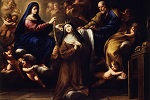
Saint Teresa of Avila: Spanish nun and mystic
Saint Teresa of Avila was a Spanish nun and mystic. One of the few women declared a Doctor of the Church…
Pope Gregory I, the Great
The first Doctor proclaimed by the Catholic Church (in 1298), but also revered by the Orthodox Churches, lived in the second half of 500 AD. He was the 64th bishop of Rome and Pope of the Church in one of the darkest periods in history, and nevertheless, he knew how to carry on his apostolate with trust and fervent convictions. Physically weak, sickly, he was one of the brightest souls of the European Middle Ages. Belonging to a rich Sicilian family, he did not study the great classics as did St. Augustine, for example, but above all the Latin literature of the late ancient age, as well as Cicero. However, he was very familiar with the sacred Texts.
In addition to his letters, homilies to the people and exegetical writings, we owe him a profound renewal of the Roman liturgy. He was also promulgator of the Gregorian Chant, the ritual chant in Latin, which takes its name from him.
Saint Ambrose of Milan, Sweet as honey
Proclaimed Doctor in 1298, Aurelio Ambrogio lived in the 4th century AD. and of that century he was one of the greatest religious personalities. He is considered one of the four greatest doctors of the Western Church, together with San Girolamo, Sant’Agostino and San Gregorio I pope.
He was the bishop of Milan, and still today he is one of the three patrons of the city. Defined as sweet as honey for his measured and elegant style, San Ambrogio left his homilies and reflections on the homilies themselves as a literary production.
St. Augustine, Doctor Gratiae
Considered perhaps one of the greatest Christian thinkers of all time, Saint Augustine of Ippona lived between the 4th and 5th centuries AD. and was proclaimed Doctor of the Church in 1298. Of North African origin, he was a great philosopher and theologian, as well as a bishop. His immense doctrine and his excellent virtues earned him the nickname of Doctor Gratiae (“Doctor of Grace”). Even today he is considered one of the Fathers of Western spirituality, a teacher of faith and life, a shepherd of souls and an inspirer of intellects hungry for knowledge and beauty. That superior Beauty which in his mind and in his works coincided with God. His major work was Confessions, which contains all the evolution of his troubled religious maturation.

Sant’Agostino d’Ippona: philosopher, bishop and theologian
Very few men of faith can be compared to Sant’Agostino d’Ippona philosopher and doctor of the Church. Sant’Agostino d’Ippona put…
The fundamental concept expressed by St. Augustine in his works is that man is unable to arrive at anything by himself, and that only God’s illumination can give direction and meaning to his life.
St. Jerome
Born in 347 and died in 419, Saint Jerome is one of the greatest biblical scholars and theologians in the history of Christianity. He was a monk and a translator, and we owe to him the Latin translation of parts of the Greek Old Testament and of the entire Hebrew Bible (the Vulgate).
Proclaimed Doctor of the Church in 1298, he is also one of the Fathers of the Church. A great scholar of Latin and Greek, he also studied Hebrew to be able to devote himself to his work as a translator. He also left the work De Viris Illustribus, a series of biographies of eminent Christian authors, but also Jews and pagans, in imitation of the “Lives” of Suetonius, to claim the merits of the new Christian literature compared to classical Latin literature.

